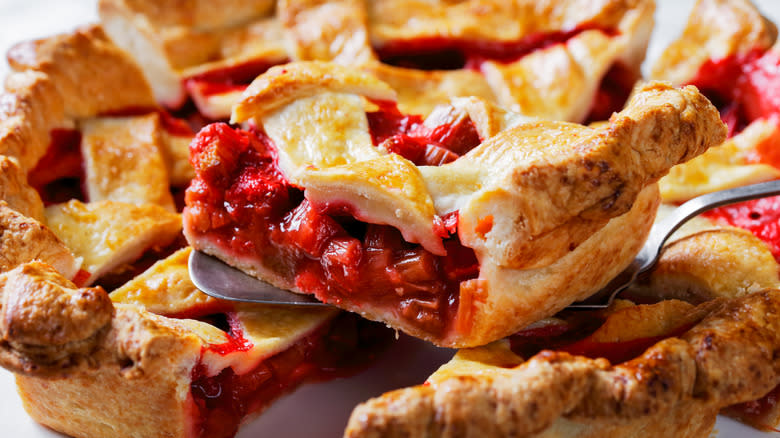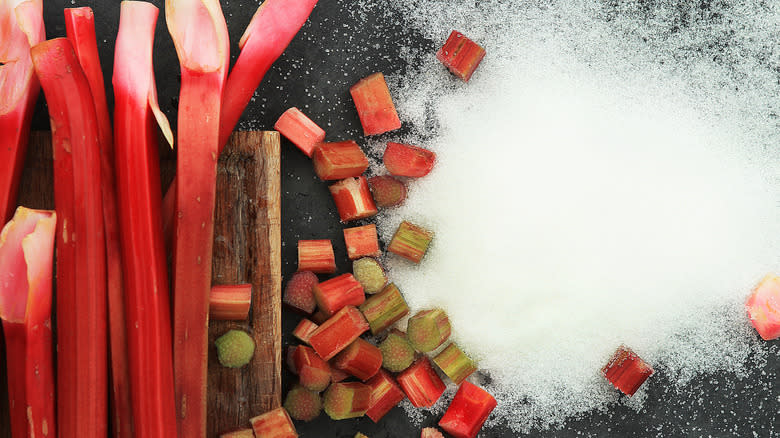The Sweet Trick To Prevent Runny Filling In Your Rhubarb Pie

Rhubarb just might be the most special of all pie fruits. Plenty of people will go to bat for cherry or apple, but rhubarb has the perfect combination of tart, sweet flavor, and tender texture that makes an ideal filling for a crispy, buttery pie crust. But for a fruit that is almost synonymous with pie and rarely gets used for anything else, it's also one of the trickiest fillings to work with. Rhubarb pie has a tendency to get extremely runny, producing a sloppy filling, and leading to that greatest of all pie sins: the soggy bottom. Thankfully the science of baking has an easy trick up its sleeve to deal with this, and all it involves is tossing your rhubarb with some sugar.
Mixing your fresh fruit with sugar and letting it sit is called maceration, and it helps draw excess liquid out of your rhubarb before it cooks out and leaves your pie soggy. Just cut up the rhubarb for your pie and mix it with the sugar you would be using for your recipe anyway, but then instead of putting it straight in your pie crust to cook, put it in a strainer over a bowl or measuring cup and let it sit for up to an hour. The sugar will draw water out of the rhubarb which will then drip into the container below. You'll be left with plenty of tasty, sweet rhubarb filling, but a lot less liquid to sog up your pie.
Read more: 30 Types Of Cake, Explained
Macerate Your Rhubarb With Sugar To Draw Out Excess Liquid

The reason rhubarb pie gets so runny is that rhubarb is 95% liquid, which puts it near the top of watery fruits and vegetables alongside things like melon and cabbage. Mixing fruit with sugar draws out moisture through the process of osmosis, which happens when water naturally balances out by migrating from the cells in your fruit to the dissolved sugar molecules on the surface, the same way it does with salt. This moisture would have been cooked out when you cooked your pie anyway, so maceration allows much more control over the moisture level of your pie.
You can cook your filling without the excess liquid, but it does still have some nice rhubarb flavor, so the better option is thickening it separately, and then adding it back to your filling. Just take the liquid you strained out and simmer it over medium-low heat with a thickener like cornstarch until it's less runny. Then add the thickened juice back to your rhubarb and cornstarch mixture before cooking your recipe like normal. The thickened juice will retain all the flavor you want, but won't seep into the crust like the runny liquid would have. Maceration is one small extra step, but it will give you rhubarb pie with the best possible texture, and even more concentrated flavor.
Read the original article on Tasting Table.

 Yahoo Finance
Yahoo Finance 